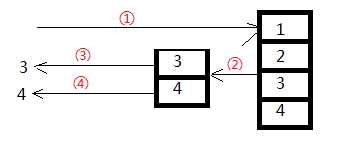标签:
厂址:
http://www.jb51.net/article/54810.htm
static List<int> GetInitialData(){ return new List<int>(){1,2,3,4};}static IEnumerable<int> FilterWithoutYield(){ List<int> result = new List<int>(); foreach (int i in GetInitialData()) { if (i > 2) { result.Add(i); } } return result;}static IEnumerable<int> FilterWithYield(){ foreach (int i in GetInitialData()) { if (i > 2) { yield return i; } } yield break; Console.WriteLine("这里的代码不执行");}总结:
通过单步调试发现:
虽然2种方法的输出结果是一样的,但运作过程迥然不同。第一种方法,是把结果集全部加载到内存中再遍历;第二种方法,客户端每调用一次,yield return就返回一个值给客户端,是"按需供给"。
第一种方法,客户端调用过程大致为:

使用yield return,客户端调用过程大致为:

so,like this is cool:

/// <summary> /// 递归构造商品分类 /// </summary> /// <param name="source"></param> /// <returns></returns> private IEnumerable<ProductCategory> RecursionCategory(IEnumerable<ProductCategoryExt> source) { if (source.IsHasRow()) { foreach (var item in source) { yield return new ProductCategory() { ParentId = item.ParentId, CateId = item.ProductCategoryId, CateName = item.VchMobileShowName, IcoUrl = item.CatePic, }; } } }
标签:
原文地址:http://www.cnblogs.com/shy1766IT/p/5068061.html